

Crystal radio. Boy listening to a modern crystal radio The rectifying property of crystals was discovered in 1874 by Karl Ferdinand Braun,[5][6][7] and crystal detectors were developed and applied to radio receivers in 1904 by Jagadish Chandra Bose,[8][9] G.

W. Pickard[10] and others. Wardenclyffe Tower. Coordinates: Wardenclyffe Tower (1901–1917) also known as the Tesla Tower, was an early wireless transmission tower designed by Nikola Tesla in Shoreham, New York and intended for commercial trans-Atlantic wireless telephony, broadcasting, and proof-of-concept demonstrations of wireless power transmission.[2][3] It was never fully operational,[4] and the tower was demolished in 1917.

The tower was named after James S. Warden, a western lawyer and banker who had purchased land for the endeavor in Shoreham, Long Island, about sixty miles from Manhattan. Here he built a resort community known as Wardenclyffe-On-Sound. He offered Tesla 200 acres (81 ha) of land close to a railway line on which to build his wireless telecommunications tower and laboratory facility. History[edit] Construction[edit] Tesla Ready for Business - August 7, 1901 New-York tribune article. Der Ring des Nibelungen. Rings of Power. Sauron intended the rings to subvert these races of Middle-earth to his power, since the One Ring was the Ruling Ring that controlled the others.
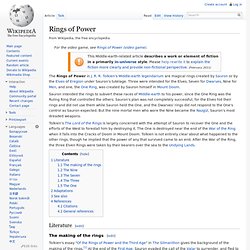
Sauron's plan was not completely successful; for the Elves hid their rings and did not use them while Sauron held the One, and the Dwarves' rings did not respond to the One's control as Sauron expected. Arche. Arche[pronunciation?]
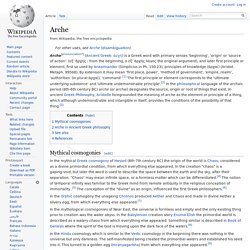
(Ancient Greek: ἀρχή) is a Greek word with primary senses 'beginning', 'origin' or 'source of action'. (εξ’ ἀρχής : from the beginning, ο εξ’ ἀρχής λόγος:the original argument), and later first principle or element, first so used by Anaximander (Simplicius in Ph. 150.23), principles of knowledge (ἀρχαί) (Aristot. Metaph. 995b8). Chromesthesia. A keyboard depicting note-color associations.
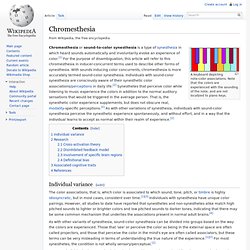
Note that the colors are experienced with the sounding of the note, and are not localized to piano keys. Individual variance[edit] Visual Dictionary, Visual Thesaurus. Opponent process. The color opponent process is a color theory that states that the human visual system interprets information about color by processing signals from cones and rods in an antagonistic manner.
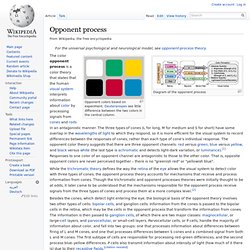
The three types of cones (L for long, M for medium and S for short) have some overlap in the wavelengths of light to which they respond, so it is more efficient for the visual system to record differences between the responses of cones, rather than each type of cone's individual response. The opponent color theory suggests that there are three opponent channels: red versus green, blue versus yellow, and black versus white (the last type is achromatic and detects light-dark variation, or luminance).[1] Responses to one color of an opponent channel are antagonistic to those to the other color. That is, opposite opponent colors are never perceived together – there is no "greenish red" or "yellowish blue". History[edit] [quant-ph/0101012] Quantum Theory From Five Reasonable Axioms. The Ripley Scroll. The Alchemy web site on Levity.com The Ripley Scroll is an important 15th century work of emblematic symbolism.
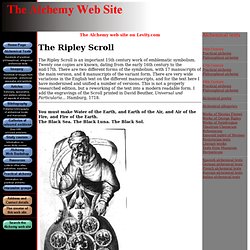
Twenty one copies are known, dating from the early 16th century to the mid-17th. Intrinsic value (ethics) It is contrasted with instrumental value (or extrinsic value), the value of which depends on how much it generates intrinsic value.[2] For an eudaemonist, happiness has intrinsic value, while having a family may not have intrinsic value, yet be instrumental, since it generates happiness.
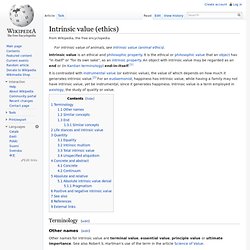
Intrinsic value is a term employed in axiology, the study of quality or value. Other names for intrinsic value are terminal value, essential value, principle value or ultimate importance. See also Robert S. Hartman's use of the term in the article Science of Value. Intrinsic value is mainly used in ethics, but the concept is also used in philosophy, with terms that essentially may refer to the same concept. End is roughly similar, and often used as a synonym, for the following concepts: This is a table which attempts to summarize the main intrinsic value of different life stances and other views, although there may be great diversity within them:
I am a professional hacker (pentester). Companies pay me to hack their computers and tell them how I did it. AMA! : IAmA. RADical Design for LEARNING. Eric Rosenbaum's homepage. Color Code The Color Code project is a set of experiments, with Jay Silver, in using the colors of everyday objects to control things on a computer.
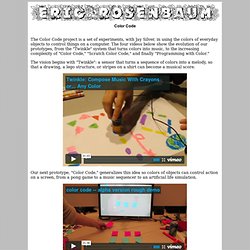
The four videos below show the evolution of our prototypes, from the "Twinkle" system that turns colors into music, to the increasing complexity of "Color Code," "Scratch Color Code," and finally "Programming with Color. " The vision begins with "Twinkle": a sensor that turns a sequence of colors into a melody, so that a drawing, a lego structure, or stripes on a shirt can become a musical score. Our next prototype, "Color Code," generalizes this idea so colors of objects can control action on a screen, from a pong game to a music sequencer to an artificial life simulation. Astra Taylor on the Unschooled Life.